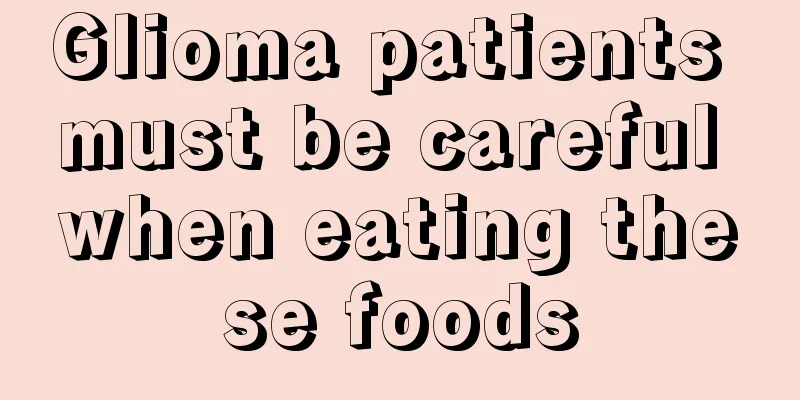These are actually symptoms of mysophobia!

|
In daily life, mysophobia is a manifestation of cleanliness, but excessive mysophobia can easily affect normal work and life, especially in interpersonal communication it can easily lead to great obstacles. There are many symptoms of mysophobia, generally manifested in psychological reasons, or psychological obstacles to objects or other objects, and feeling that everything is dirty. In the long run, it will lead to some mental illnesses and need timely treatment. Symptoms and signs The symptoms of "cleanliness obsession" belong to obsessive-compulsive neurosis, which is a very common and stubborn mental illness. Symptoms of patients include: subjectively feeling that there are some irresistible, compulsive and helpless ideas, emotions, intentions or behaviors. They are able to realize that these should not appear or are meaningless, but strong anxiety and fear emerge from their hearts, and they have to take certain actions to comfort themselves. For example, after finishing a task, the patient feels that his hands are dirty and feels uncomfortable, so he has to wash them for a certain time or a certain number of times. If he does not do so, he will feel very anxious. Therefore, he washes them again and again, and he will feel better this way. Not only that, the patient does not allow his family to sit anywhere they want and does not welcome friends to visit. He not only pays attention to his own hands, but also to other people around him. For example, if someone forgets to wash their hands after going to the toilet, or does not wash their hands after coming back from outside and touches some documents and utensils, he will be very nervous about these documents and utensils and dare not touch them. He will also be nervous about shaking hands with others; and he will not relax even when he returns home. But it happened again soon after. Over time, it will seriously affect work and life. Diagnostic basis: obsessive-compulsive neurosis with mysophobia as the main symptom. Inspection and testing No special examination is required; the diagnosis can be confirmed by the patient's own description or the symptoms relayed by his or her family. Differential diagnosis 1. Differentiation from mental illness: According to the three principles of illness and non-illness, the person seeking help has unified and consistent knowledge, emotion and intention, is self-aware of his or her own psychological problems, seeks medical treatment on his or her own, has no logical confusion, no abnormal perception, and no hallucinations, delusions and other mental illness symptoms. Therefore, mental illness can be ruled out. 2. Differentiation from anxiety neurosis: Anxiety neurosis is an anxiety disorder with generalized anxiety or paroxysmal phobia as the main clinical phase. It is an unpleasant emotion of inner tension and uneasiness, a premonition that unfavorable situations are about to happen and difficult to cope with, often accompanied by dizziness, chest tightness, palpitations, dyspnea, sweating and motor restlessness. Although the client showed anxiety, the anxiety symptom was not the main one. The main symptom was compulsive behavior and anxiety was a concomitant symptom. Therefore, anxiety neurosis can be ruled out. Complications Mysophobic patients often have the following diseases: 1. Anxiety 2. Depression 3. Neurasthenia 4. In psychological counseling clinics, there are many people with "cleanliness obsession" who are also prone to oral ulcers, diarrhea, colds, pharyngitis and other diseases. 5. Schizophrenia Preventive Care "Cleanliness" is not about hygiene: In fact, hygiene is for health, health is for work, work is for creating value or pursuing a happy life, but not for not getting sick. In other words, hygiene is not the life goal we pursue. The behavior of "cleanliness obsessive-compulsive disorder" seems to be very hygienic, but in fact, people cannot feel happy, but only nervous and painful. They feel very tired and have no time to enjoy life. Most of their life is spent washing hands. Is it worth it? Therefore, the value concept of "cleanliness obsessive-compulsive disorder" must first be adjusted. Think about why you are alive. Secondly, the cleaner you are, the less likely you are to get sick? Moderate contact with germs will actually develop resistance. Suppose, two people go to a place with germs, one is a "clean freak" who is particularly fond of cleanliness, and the other is not a "clean freak". Who is more likely to be infected with germs? The "clean freak". Because some of the germs on the latter's body cause his body to produce antibodies, which will fight against foreign germs, but the "cleanliness freak" has no defense at all, and the germs can enter directly. After entering adulthood, you are exposed to a wide range of social circles. If you still keep yourself too clean, you will be more likely to get sick. In psychological counseling clinics, there are many people with "cleanliness obsession" who are also prone to oral ulcers, diarrhea, colds, pharyngitis and other diseases because they are too obsessed with cleanliness. Treatment 1. If mysophobia is severe enough to become obsessive-compulsive disorder, treatment is usually based on psychotherapy, supplemented by medication. 2. Systematic desensitization therapy: Ask the patient to write down the things and scenes that he is afraid of, and the things he often does, from mild to severe, and then control his behavior starting with the easiest thing every day, such as gradually reducing the number and time of washing hands. 3. Cognitive therapy: The key to cognitive therapy is educational correction. Educational correction starts from several aspects: 1) Find out the causes of mysophobia and use scientific knowledge to eliminate misunderstandings. 2) Let the patient change his way of thinking, have a plan, and do the main things first. 3) For children, we should cooperate with parents. Adopt scientific parenting methods and don't be overly demanding on your child's cleanliness. Teach your child to control their behavior. Give timely praise and rewards to children for their good behavior. 4. Aversion therapy: The rubber band method is often used. That is, the patient is asked to wear an elastic band on his wrist. Once he is about to perform compulsive actions or behaviors, he is asked to use the elastic band to tap his wrist dozens or even hundreds of times until the obsessive thoughts disappear and he feels pain, thereby achieving the purpose of suppressing the compulsive behavior. 5. Flooding therapy: Let the patient sit in the room and ask his friends or relatives to assist him. The patient relaxes his whole body, closes his eyes lightly, and then asks the assistant to apply various liquids on the patient's hands, such as water, ink, rice soup, oil, dye, etc. During the application, the patient should try to relax while the assistant tries his best to describe verbally that the hands are very dirty. The patient should try to endure it as much as possible until he can no longer endure it and opens his eyes to see how dirty it is. When applying liquids, assistants should randomly use transparent liquids and opaque liquids, and randomly use clean water and other liquids. In this way, when the patient opens his eyes, his hands are not dirty, or at least not as dirty as he imagined. This is a shock to the patient's mind, indicating that "dirty" often comes more from his own thoughts and does not match the actual situation. When the patient finds that his hands are really dirty, the urge to wash his hands will be greatly enhanced. At this time, the treatment assistant must forbid him to wash his hands. This is the key to treatment. The patient will feel very painful, but he or she should try to hold on, and the assistant should actively encourage him or her. |
<<: How to treat a sprained foot?
>>: What are some simple ways to make bread at home?
Recommend
Taboos of finger tattoos
In life, many people like to get tattoos. They th...
What to do if toothache medicine doesn't work
Toothache can be said to be a very common discomf...
Homemade steam medicine bag
Nowadays, health preservation has become a topic ...
What are the effects and functions of red agate?
Red agate is a kind of agate. Its red and transpa...
What to do if you have bladder cancer and keep urinating blood
The most obvious symptom of bladder cancer patien...
Is Western medicine or traditional Chinese medicine better for treating insomnia
Both traditional Chinese medicine and Western med...
Is germanium harmful to the human body?
Germanium is actually a chemical element. This su...
What are the effects and functions of grape seed mask?
Grape seed mask is a mask that many middle-aged a...
Can nerve pain be cured?
Even today when modern medicine is so advanced, t...
What is the correct way to brew Longjing tea?
Longjing tea looks flat, the emerald green color ...
Little lL had a puncture in his mouth and took anti-inflammatory medicine
The oral cavity is very important to us. Many peo...
Can patients with thyroid cancer not eat mangosteen?
Patients with thyroid cancer can eat mangosteen. ...
What are the common diagnostic methods for nasopharyngeal tumors?
Nasopharyngeal tumors are the result of severe de...
What test can accurately detect teratoma
With the development of the economy, the environm...
What are the effects of stewing chicken with yam?
Stewed yam with chicken is a home-cooked dish mad...









